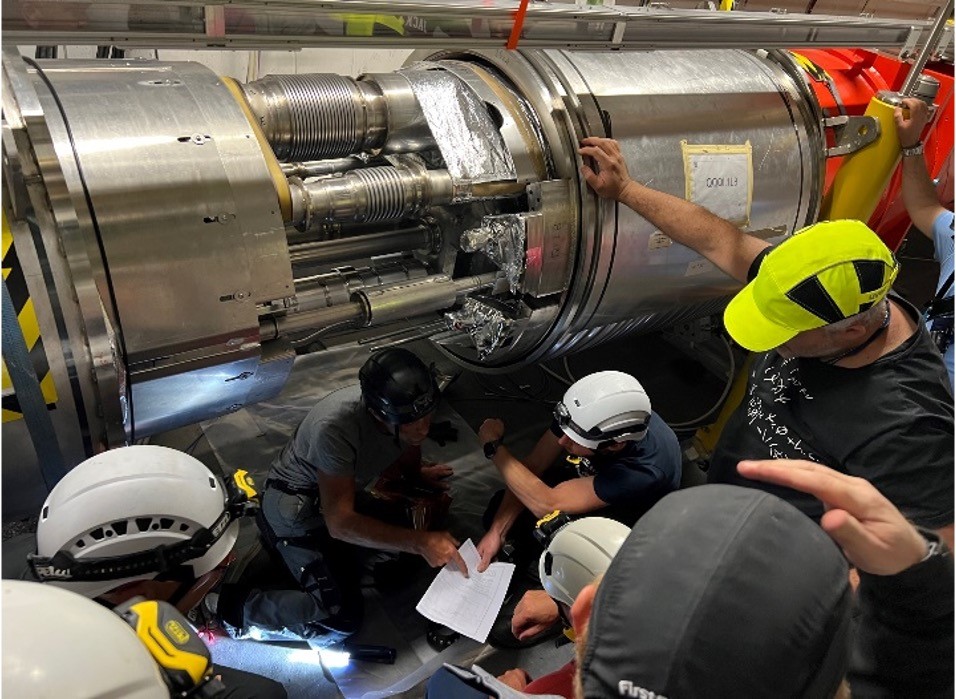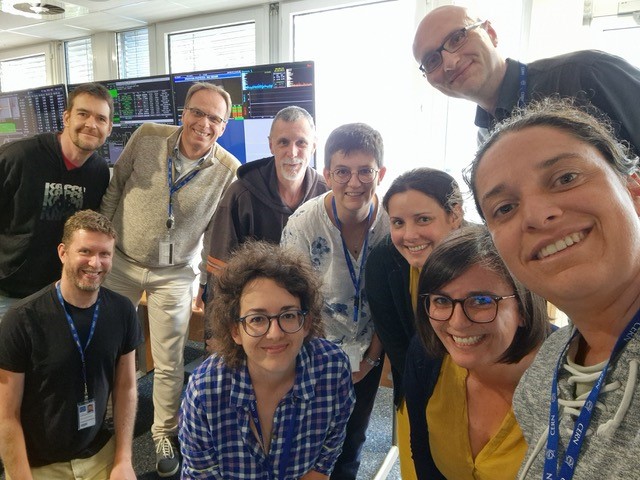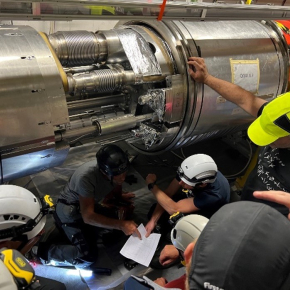Beams return in the LHC after a 6-week shutdown
After several weeks' interruption, beams have returned into the LHC ring on 30 August. On 17 July, an electrical fault caused by a falling tree on a Swiss power line unfortunately had serious consequences. The disturbance spread to the LHC power supply and triggered a resistive transition in the triplet magnet located next to the LHCb experiment. The mechanical forces generated when this magnet lost its superconducting state created a crack in the interconnection (image below) between the triplets, breaking the vacuum in this part of the installation.
The repairs took around 6 weeks (out of the 8 initially planned). This forced downtime was used by the experiments to calibrate and improve their equipment. Although a return to high-intensity proton beams is out of the question this year, the LHC is nonetheless capable of carrying out the low-intensity programme initially planned.

Crédit : CERN
The low-intensity programme has resumed
The first two weeks of September were used for measurements of elastic proton scattering, only possible in the configuration where the beams are almost parallel, and for the consolidation of a second leak that was quickly located and fixed to the interconnection. From the end of September, the LHC will operate with heavy ions (lead) and the following weeks, until 30 October, will be devoted to the heavy ion physics programme.
The early return of the beams after the incident could provide extra time for high-intensity proton collisions next year. Although this year only 32 fb-1 of integrated luminosity out of the 75 planned were delivered, we can therefore hope that next year we will exceed our objectives, returning to the excellent performances to which the LHC has accustomed us.

Crédit : Silvia Francino Heidelberg KIP
